General Sir John Monash, Personal Files Book 17, 14 January - 11 February 1918, Part 8

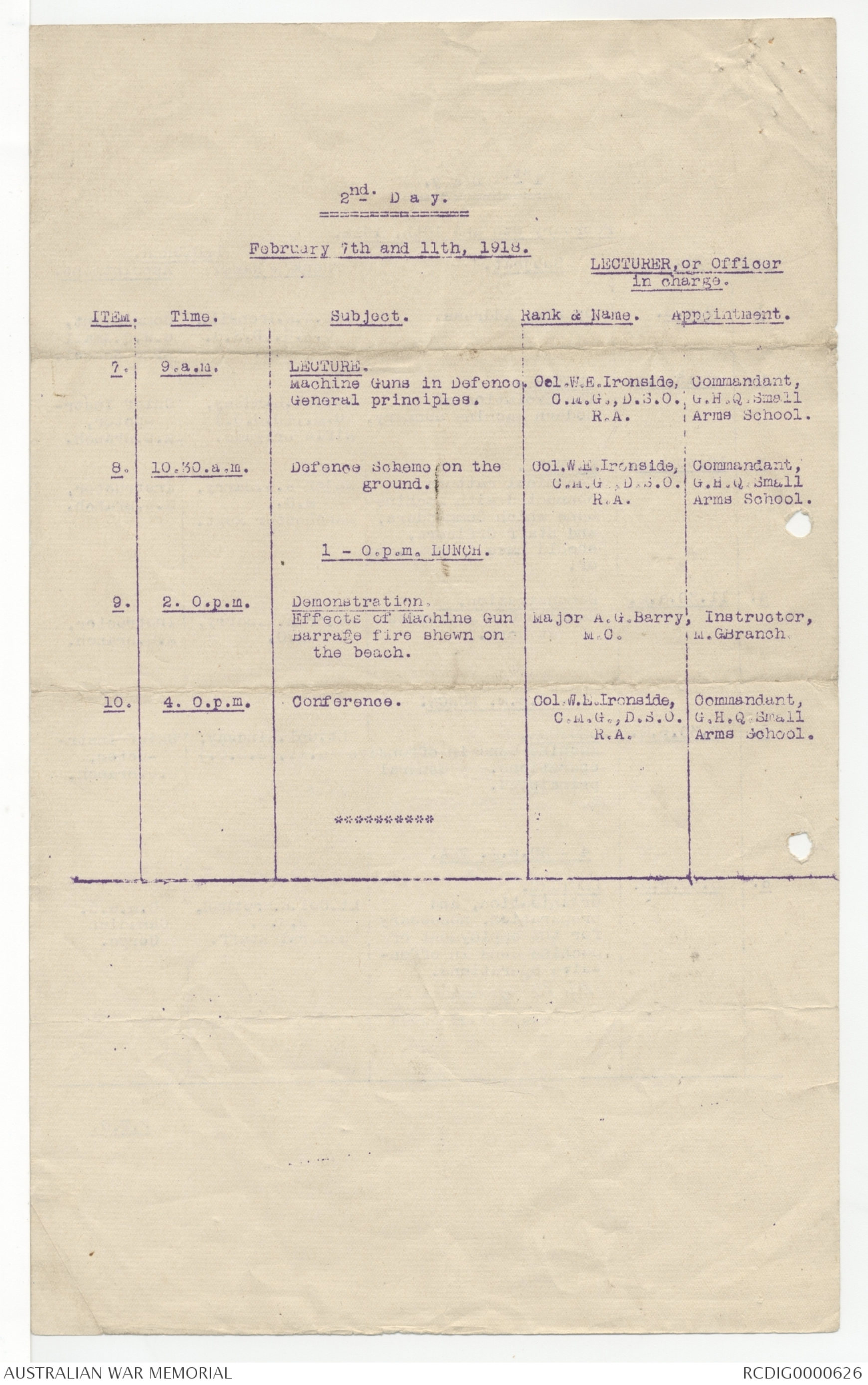
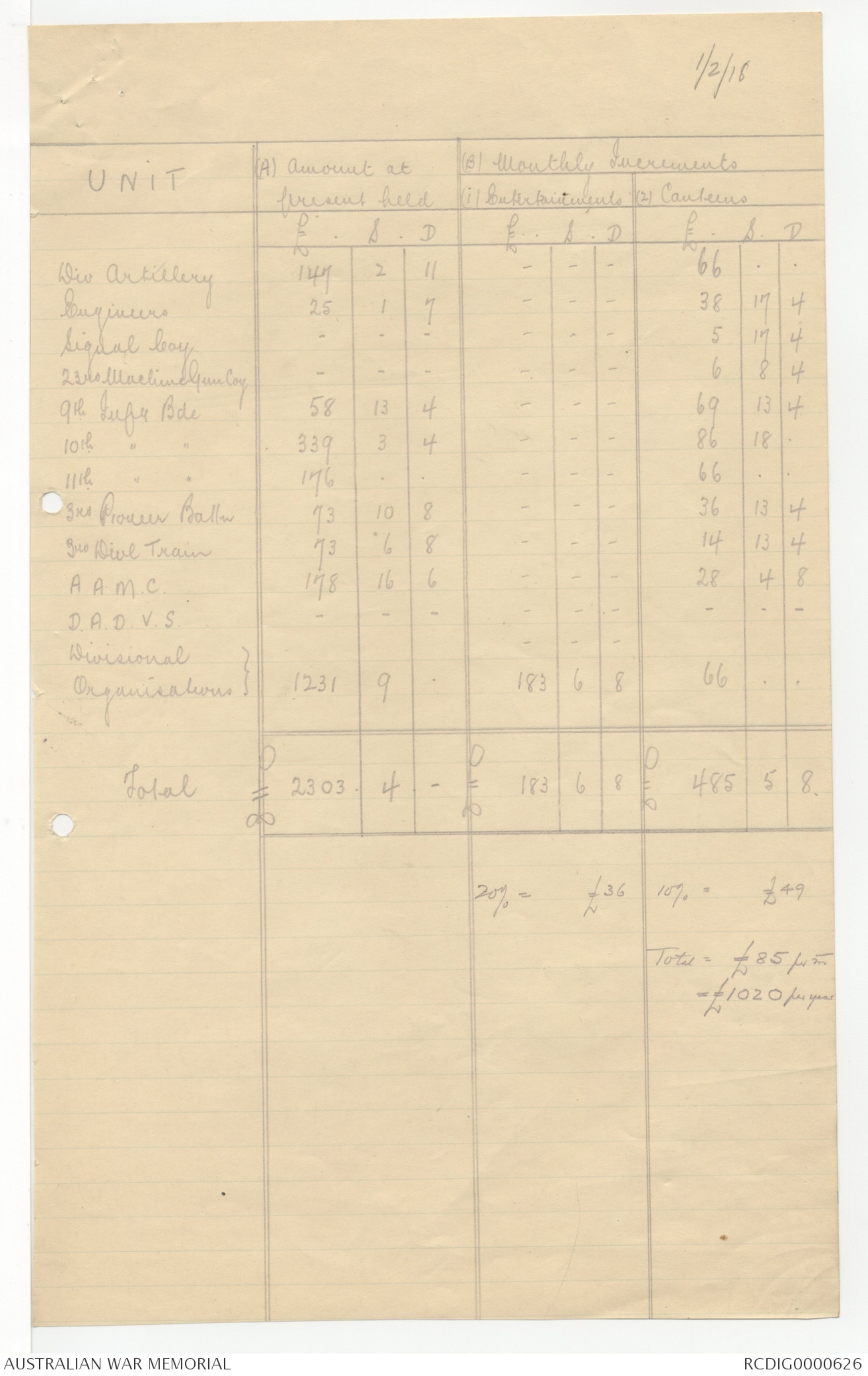
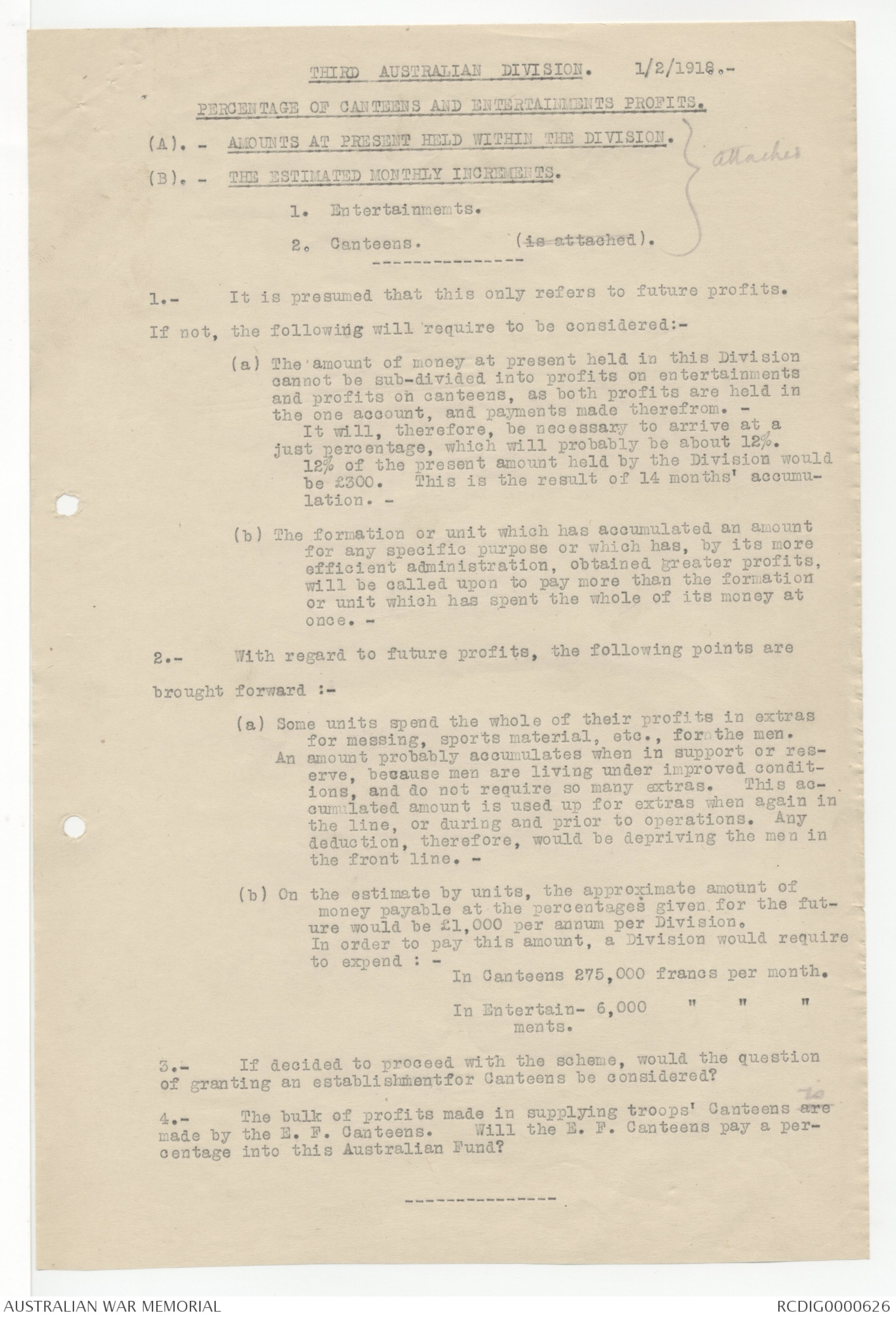
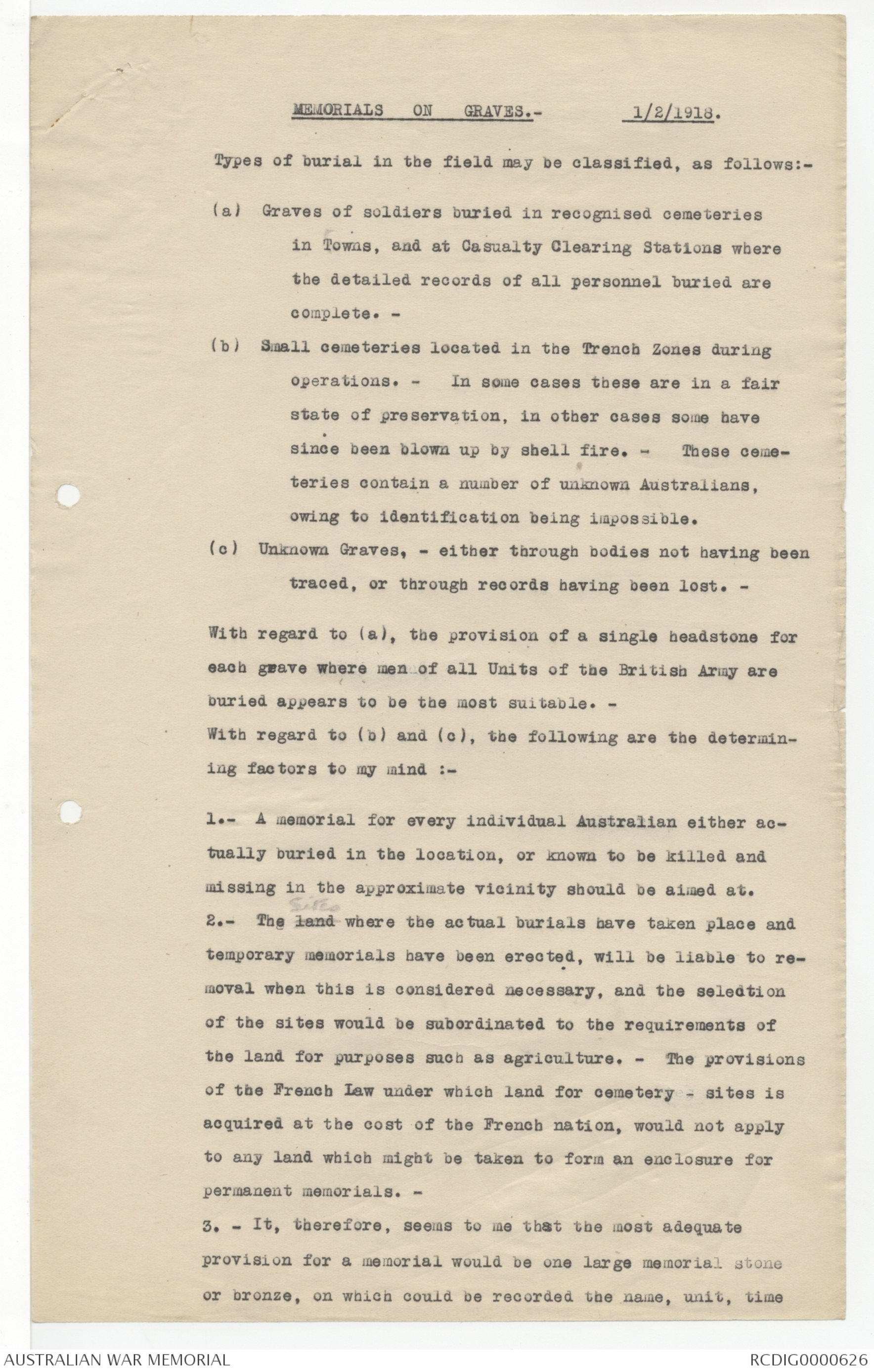
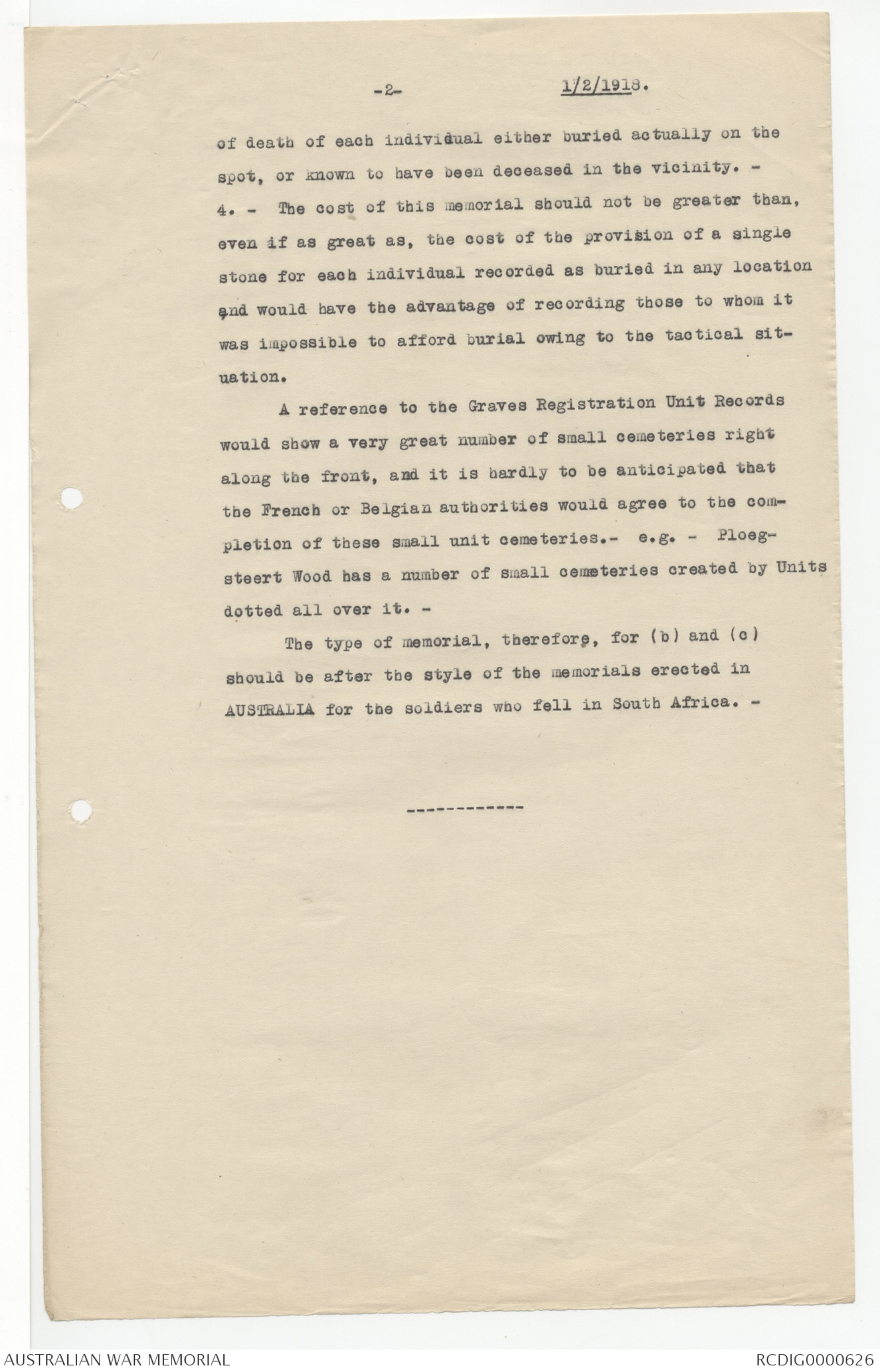
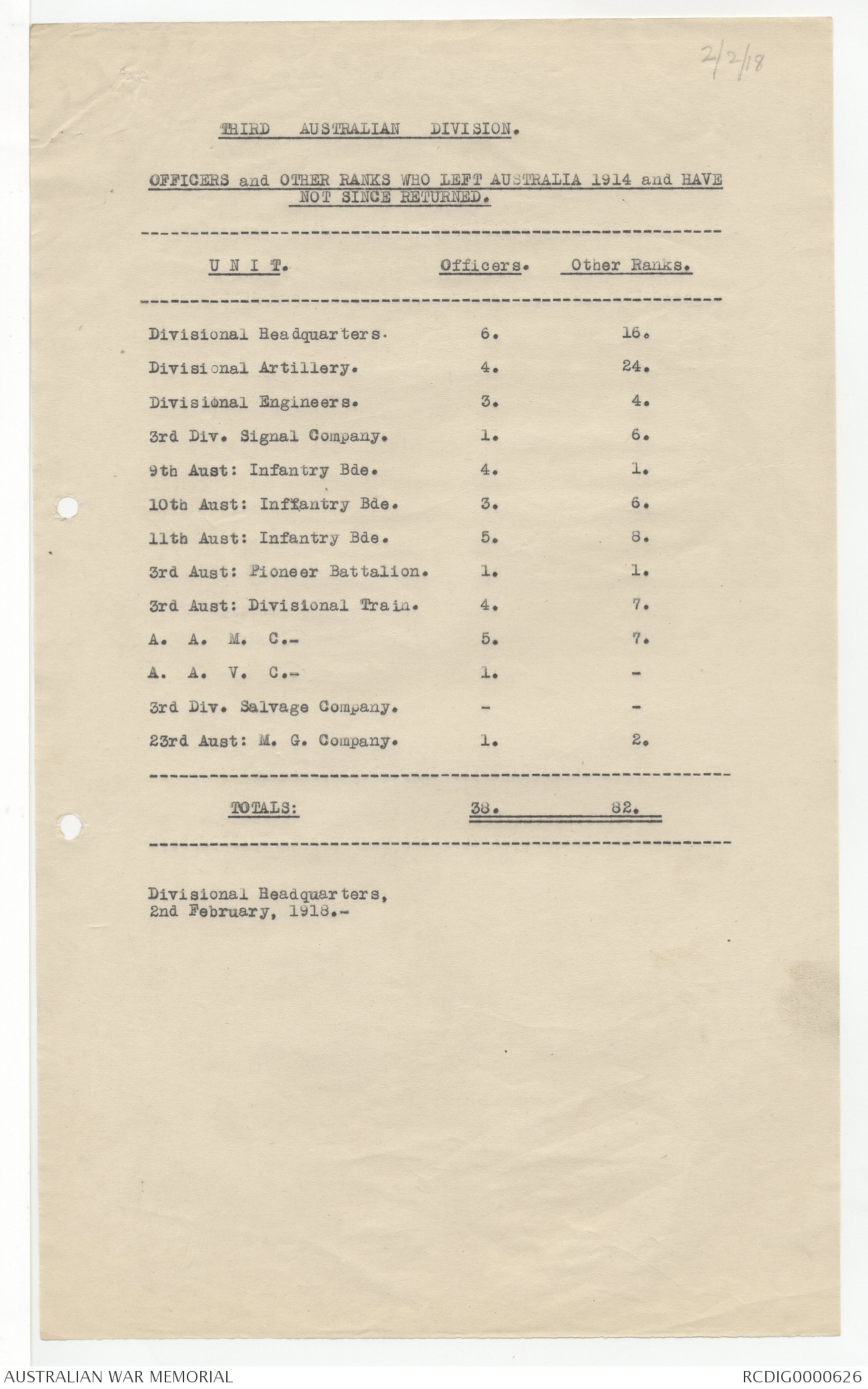
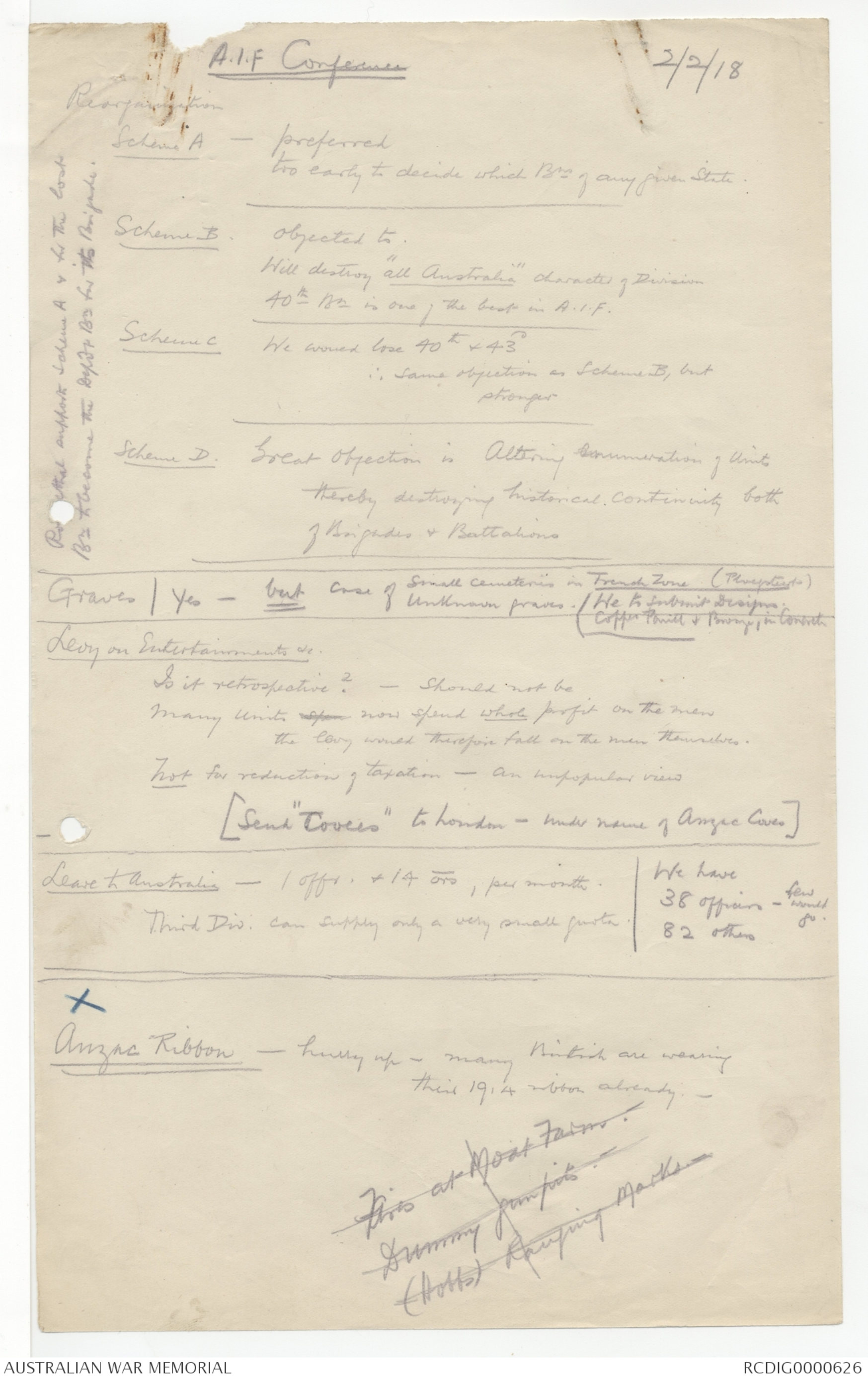
1st Day.
February 6th and 10th, 1918.
|
LECTURER. |
||||
| ITEM. | Time. | Subject. | Rank & Name. | Appointment. |
| 1. | 9.a.m. | Opening Address. |
Col.W.E.Ironside, C.M.G.,D.S.O. |
Commandant, G.H.Q.Small |
| 2. | 9.15.a.m. | LECTURE. | ||
| The Evolution of Modern Machine Gunnery. |
Lt.Col.Lindsay, G.M., (D.S.O.) Rifle Brigade. |
Chief Instructor, M.G.Branch. |
||
| 3. | 10.30.a.m. | LECTURE. | ||
|
Technical matters connected with machine Guns which Commanders, and Staff Officers, should have a knowledge of. |
Major A.G.Barry, M.C., Manchester Regt. |
Instructor, M.G.Branch. |
||
| 4. | 11.30.a.m. | Demonstration. | ||
| Machine Gun Batteries at work. |
Major A.G.Barry, M.C. |
Instructor, M.G.Branch. |
||
| 1 - 0.p.m. LUNCH. | ||||
| 5. | 2.30.p.m. |
|
|
|
|
Resume' of operations of 1917 |
Capt. Fay. | |||
| 4 - 30.p.m. TEA. | ||||
| 6. | 5.30.p.m. | LECTURE. | ||
|
Organisation, and preparation, necessary for the employment of machine guns in offensive operations. Hill 70 operation |
Lt.Col.R.Brutinel, D.S.O. |
C.H.G.O. Canadian Corps. |
||
P.T.O.
2nd Day.
February 7th and 11th, 1918.
| LECTURER, or Officer in charge. |
||||
| ITEM. | Time. | Subject. | Rank & Name. | Appointment. |
| 7. | 9.a.m. | LECTURE. | ||
|
Machine Guns in Defence General principles.
|
Col.W.E.Ironside, C.M.G.,D.S.O. R.A. |
Commandant, G.H.Q. Small Arms School. |
||
| 8. | 10.30.a.m. |
Defence Scheme on the ground.
|
Col.W.E.Ironside, C.M.G.,D.S.O. R.A. |
Commandant, G.H.Q. Small Arms School. |
| 1 - 0.p.m. LUNCH. | ||||
| 9. | 2. 0.p.m. | Demonstration. | ||
|
Effects of Machine Gun Barrage fire shown on the beach. |
Major A.G.Barry, M.C.
|
Instructor. M.GBranch
|
||
| 10. | 4. 0.p.m. |
Conference.
|
Col.W.E.Ironside, C.M.G.,D.S.O. R.A. |
Commandant, G.H.Q. Small Arms School. |
1/2/18
| UNIT |
(A) Amount at present held |
(B) Monthly Increments | |||||||
| (1) Entertainments | (2) Canteens | ||||||||
| £. | S. | D | £. | S. | D. | £. | S. | D. | |
| Div Artillery | 147 | 2 | 11 |
- |
- |
- |
66 |
- |
- |
| Engineers | 25 | 1 | 7 |
- |
- |
- |
38 | 17 | 4 |
| Signal Coy |
- |
- |
- |
- |
- |
- |
5 | 17 | 4 |
| 23rd Machine Gun Coy |
- |
- |
- |
- |
- |
- |
6 | 8 | 4 |
| 9th Infy Bde | 58 | 13 | 4 |
- |
- |
- |
69 | 13 | 4 |
| 10th " " | 339 | 3 | 4 |
- |
- |
- |
86 | 18 |
- |
| 11th " " | 176 | - | - |
- |
- |
- |
66 |
- |
- |
| 3rd Pioneer Battn | 73 | 10 | 8 |
- |
- |
- |
36 | 13 | 4 |
| 3rd Divl Train | 73 | 6 | 8 |
- |
- |
- |
14 | 13 | 4 |
| A.A.M.C. | 178 | 16 | 6 |
- |
- |
- |
28 | 4 | 8 |
| D.A.D.V.S. |
- |
- |
- |
- |
- |
- |
- |
- |
- |
| Divisional } | |||||||||
| Organisations } | 1231 | 9 |
- |
183 | 6 | 8 | 66 |
- |
- |
|
|
|||||||||
| Total | £ 2303 | 4 |
- |
£ 183 | 6 | 8 | £ 485 | 5 | 8. |
| 20% = £ 36 | 10% = £ 49 | ||||||||
| Total = £ 85 per m | |||||||||
| = £ 1020 per year | |||||||||
THIRD AUSTRALIAN DIVISION. 1/2/1918.-
PERCENTAGE OF CANTEENS AND ENTERTAINMENTS PROFITS.
(A). - AMOUNTS AT PRESENT HELD WITHIN THE DIVISION. }
(B). - THE ESTIMATED MONTHLY INCREMENTS. } Attached
1. Entertainments. }
2. Canteens. (is attached). }
1.- It is presumed that this only refers to future profits.
If not, the following will require to be considered:-
(a) The amount of money at present held in this Division
cannot be sub-divided into profits on entertainments
and profits on canteens, as both profits are held in
the one account, and payments made therefrom. -
It will, therefore, be necessary to arrive at a
just percentage, which will probably be about 12%.
12% of the present amount held by the Division would
be £300. This is the result of 14 months' accumulation.-
(b) The formation or unit which has accumulated an amount
for any specific purpose or which has, by its more
efficient administration, obtained greater profits,
will be called upon to pay more than the formation
or unit which has spent the whole of its money at
once. -
2.- With regard to future profits, the following points are
brought forward:-
(a) Some units spend the whole of their profits in extras
for messing, sports material, etc., for the men.
An amount probably accumulates when in support or reserve,
because men are living under improved conditions,
and do not require so many extras. This accumulated
amount is used up for extras when again in
the line, or during and prior to operations. Any
deduction, therefore, would be depriving the men in
the front line. -
(b) On the estimate by units, the approximate amount of
money payable at the percentages given for the future
would be £1,000 per annum per Division.
In order to pay this amount, a Division would require
to expend : -
In Canteens 275,000 francs per month.
In Entertainments.- 6,000 " " "
3.- If decided to proceed with the scheme, would the question
of granting an establishmentfor Canteens be considered?
4.- The bulk of profits made in supplying troops' Canteens are is
made by the E. F. Canteens. Will the E. F. Canteens pay a percentage
into this Australian Fund?
MEMORIALS ON GRAVES.- 1/2/1918.
Types of burial in the field may be classified, as follows:-
(a) Graves of soldiers buried in recognised cemeteries
in Towns, and at Casualty Clearing Stations where
the detailed records of all personnel buried are
complete. -
(b) Small cemeteries located in the Trench Zones during
operations. - In some cases these are in a fair
state of preservation, in other cases some have
since been blown up by shell fire. - These cemeteries
contain a number of unknown Australians,
owing to identification being impossible.
(c) Unknown Graves, - either through bodies not having been
traced, or through records having been lost. -
With regard to (a), the provision of a single headstone for
each grave where men of all Units of the British Army are
buried appears to be the most suitable. -
With regard to (b) and (c), the following are the determining
factors to my mind :-
1.- A memorial for every individual Australian either actually
buried in the location, or known to be killed and
missing in the approximate vicinity should be aimed at.
2.- The land sites where the actual burials have taken place and
temporary memorials have been erected, will be liable to removal
when this is considered necessary, and the selection
of the sites would be subordinated to the requirements of
the land for purposes such as agriculture. - The provisions
of the French Law under which land for cemetery - sites is
acquired at the cost of the French nation, would not apply
to any land which might be taken to form an enclosure for
permanent memorials. -
3. - It, therefore, seems to me that the most adequate
provision for a memorial would be one large memorial stone
or bronze, on which could be recorded the name, unit, time
-2- 1/2/1918.
of death of each individual either buried actually on the
spot, or known to have been deceased in the vicinity. -
4. - The cost of this memorial should not be greater than,
even if as great as, the cost of the provision of a single
stone for each individual recorded as buried in any location
and would have the advantage of recording those to whom it
was impossible to afford burial owing to the tactical situation.
A reference to the Graves Registration Unit Records
would show a very great number of small cemeteries right
along the front, and it is hardly to be anticipated that
the French or Belgian authorities would agree to the completion
of these small unit cemeteries.- e.g. - Ploegsteert
Wood has a number of small cemeteries created by Units
dotted all over it. -
The type of memorial, therefore, for (b) and (c)
should be after the style of the memorials erected in
AUSTRALIA for the soldiers who fell in South Africa. -
2/2/18
THIRD AUSTRALIAN DIVISION.
OFFICERS and OTHER RANKS WHO LEFT AUSTRALIA 1914 and HAVE
NOT SINCE RETURNED.
| UNIT. | Officers. | Other Ranks. |
| Divisional Headquarters. | 6. | 16. |
| Divisional Artillery. | 4. | 24. |
| Divisional Engineers. | 3. | 4. |
| 3rd Div. Signal Company. | 1. | 6. |
| 9th Aust: Infantry Bde. | 4. | 1. |
| 10th Aust: Inf |
3. | 6. |
| 11th Aust: Infantry Bde. | 5. | 8. |
| 3rd Aust: Pioneer Battalion. | 1. | 1. |
| 3rd Aust: Divisional Train. | 4. | 7. |
| A. A. M. C.- | 5. | 7. |
| A. A. V. C.- | 1. | - |
| 3rd Div. Salvage Company. | - | - |
| 23rd Aust: M. G. Company. | 1. | 2. |
| TOTALS: | 38. | 82. |
Divisional Headquarters,
2nd February, 1918.-
A.I.F. Conference 2/2/18
Reorganisation
| Scheme A - |
preferred too early to decide which Bns of any given State. |
| Scheme B. |
objected to Will destroy "all Australia" character of Division 40th Bn is one of the best in A.I.F. |
| Scheme C |
We would lose 40th & 43rd ∴ Same objection as Scheme B, but stronger |
| Scheme D. |
Great objection in altering Enumeration of Units thereby destroying historical continuity both of Brigades & Battalions |
| Graves |
Yes - but case of small cemeteries in Trench Zone (Ploegsteert) Unknown graves. We to submit designs. Copper Point & Bronze, in Concrete |
[* Rosenthal supports Scheme A & for the lost
Bn to become the Depdt Bn for its Brigade.*]
Levy on Entertainments &c.
Is it retrospective? - Should not be
Many Units spen now spend whole profit on the men
the levy would therefore fall on the men themselves.
Not for reduction of taxation - an unpopular view
[Send "Covers" to London - under name of Anzac Coves]
Leave to Australia - 1 offr. & 14 ors, per month.
Third Div. can supply only a very small quota.
We have
38 officers - few would go.
82 others
X
Anzac Ribbon - hurry up - many British are wearing
their 1914 ribbon already. -
[[7Aies/FAir?]] at Moat Farm.Dummy gun pits .-(Hobbs) Ranging Marks.-
 Sam scott
Sam scottThis transcription item is now locked to you for editing. To release the lock either Save your changes or Cancel.
This lock will be automatically released after 60 minutes of inactivity.